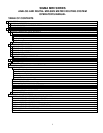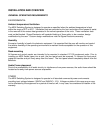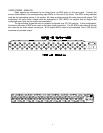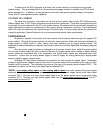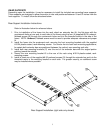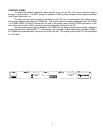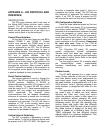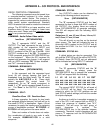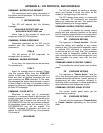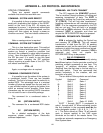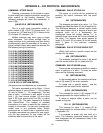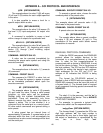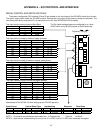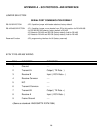A1
APPENDIX A – SCI PROTOCOL AND
INTERFACE
INTRODUCTION
The SCI serial interface card is the heart of
the Sigma MRX Series mid-size matrix routing
system. The SCI functions as the controller
between the user and the switcher crosspoints. A
switch can be generated one of two ways: by a
remote control panel or by the serial port.
Control Panel Interface
On the rear of the main frame are two BNCs
labeled "COMM 1" and "COMM 2". Coaxial
control lines connect the COMM ports to the
remote control panels. Multiple control panels
may be supported by the SCI. The 64 different
panel addresses allow each panel to have a
unique polling address. This prevents conflicts of
transaction information during a poll between the
SCI and a specific address. The SCI
systematically polls the control panel addresses to
request transaction data. When polled, data
present at the control panel is transmitted to the
SCI via the coax cable. The SCI interprets and
executes the instruction. After a panel is polled,
the SCI transmits an update of the transaction to
all the system control panels. In this way there is
a positive feedback for each transaction.
Serial Control Interface
The second method of control is through the
serial port. The SCI can support either RS-232 or
RS-422 protocols. Selection of RS-232 is
obtained by placing the dual 9 Pin jumper on JP2
(factory default). To select RS-422 the jumper
must be moved to JP1. Serial communications is
achieved with very simple and straightforward
ASCII commands. The interrupt driven
communications link will respond immediately
whenever a command is issued from an external
serial device. When the command is received, it is
interpreted and executed. The SCI will issue a
response of "OK" to the sending device upon
completion of each transaction. If the command
was invalid the SCI will transmit a "?". The
response can be disabled if required.
Vertical Interval Switching
The SCI is capable of generating a vertical
interval switch. To do this a reference signal must
be present at the "REF IN" BNC. This signal can
be either a composite video signal (1 Vp-p) or a
composite sync pulse (-4vpp). The SCI will use
this reference to determine the vertical interval
switch. If no “REF IN” signal is present the SCI
will execute the switch as soon as it is interpreted.
SCI Configuration Switches
There are three switches located on the front
on the SCI-MRX circuit board. S1 is a momentary
push button switch labeled "RESET". This switch
functions as a microprocessor hardware reset that
forces the processor to restart from a default
setup condition. The SCI will reset all crosspoints,
every output will be set to input 1. An S1 reset will
clear all entries in the internal salvo tables and
panel restrictions in the SCI memory. Reset must
be used with care. Refer to the CTRL-W
command before implementing a system reset
with S1.
The 12-position DIP switch, S2, provides
system configuration. System configuration
includes serial port baud rate, switcher input
range, output range, protocol logical addressing
and number of control levels. Refer to the tables
provided in this manual.
The four-position switch, S3 is used to select
the Numeric/Alpha mode, enable/disable
hardware handshaking and control panel
scanning.
Control Levels
The SCI-MRX supports four or eight control
levels. Rotary switches on the front of the audio
and video boards control level assignments for
each output group. Level 1, typically assigned to
the video modules, is designated with an A in the
ASCII protocol. Level 2, typically assigned to the
audio modules, is designated with letter B in the
protocol.
The separation of signals into levels allows
the router’s logic to switch one level without
affecting any other level. Using level control
allows the operator to switch a video signal to a
given destination without changing the audio
signal for that destination. This is referred to as a
breakaway switch.
As well, the operator may
source video and audio from two different
source devices. With the use of level control
the video source is preset on its level and
audio is preset on a different level. At the
TAKE command the two different source
signals switch to a common destination. This
is referred to as a split mode switch.



